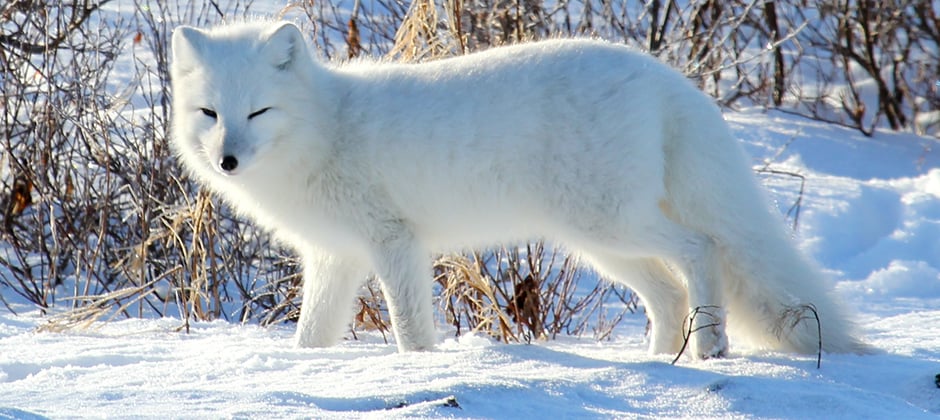Share this article
Arctic mammals respond to changing climate
To understand how Arctic species might respond to climate change, researchers dug into how cold-adapted species responded between previous ice ages.
Biologists had concluded that as massive ice sheets retreated, temperate species began to take over and cold-adapted species retreated into colder areas. But researcher Joanna Stojak wasn’t sure that was the best explanation.
“I started to ask myself if this idea was that simple,” said, Stojak, who was pursuing her PhD at the Mammal Research Institute at the Polish Academy of Sciences. “When you look at interglacial cycles, it actually showed up that these warming events were very abrupt and the cold events were over very, very long periods of time.”
That would mean that temperate species had thousands of years to adapt, but cold-adapted species had to respond much faster. Plus, when warming events occurred, they completely broke up ice sheets, washing out vast areas and killing populations of wildlife.
Stojak is an author of a study published in Mammal Review looking at how cold-adapted species may have responded to prehistoric warming events. The team hoped their findings could shed some light on how some of today’s species might respond to more current warming events, which are happening far more abruptly due to human impacts on the environment.
“We are now looking at the next massive extinction,” Stojak said. “What can we do to stop it? If the main problem is climate change and global warming, then maybe we have to look at how different Arctic species reacted to similar warming events in the past.”
Some of these changes are already noticeable in species like polar bears (Ursus maritimus), she said, which are declining as sea ice retreats since they use the ice to hunt seals.
Researchers used several different methods to try to peer back into the past. They used European fossil records of terrestrial mammals dating back 30,000 years to determine where species occurred and when they were there. They also looked at genetics taken from fossils and from contemporary populations to understand their genetic lineages. “You can actually build the whole scenario and reconstruct the evolutionary history of the species,” she said.
Their methods showed some clear patterns for how different taxa responded to warming. The first response, which they called extinction and genetic diminution, occurred in narrow headed voles (Microtus gregalis), Nearctic collared lemmings (Dicrostonyx groenlandicus) and Norway lemmings (Lemmus lemmus). In Europe, these species didn’t have time to react and died out after the Ice Age, but they survived in Asia. “This not only meant extinction of some populations, but extinction of whole genetic diversity,” Stojak said. They continue today, but with a much smaller gene pool.
In the second scenario, local populations went extinct and were replaced by populations from elsewhere. Arctic foxes (Vulpes lagopus), wolverines (Gulo gulo) and reindeer (Rangifer tarandus) in Europe were replaced by populations from America and Siberia.
The final pattern the team established was contraction and gene transfer for species like mountain hare (Lepus timidus) and sable (Martes zibellina). These species have temperate counterparts in the same families that took over. The Arctic species mated with the temperate species and “left a souvenir” of their DNA, Stojak said. “Even now when their range is contracted, there’s still some ghost of the past in some populations,” she said.
Some of these patterns may happen again as ice sheets melt, Stojak said, but times have changed since the last Ice Age, and many species may not be as resilient as they were in the past. “Now, genetic diversity is lower, so they won’t be as strong,” she said. She recommends ensuring habitat connectivity to give species access to refugia.
She also stresses the importance of slowing climate change. “If we show people that global warming actually means the next global extinction, maybe we can stop it,” she said. “I’m not sure we can go back, but maybe we can stop it.”
Header Image: Arctic foxes experienced what researchers call “extinction and replacement” during the interglacial period. Credit: Emma








